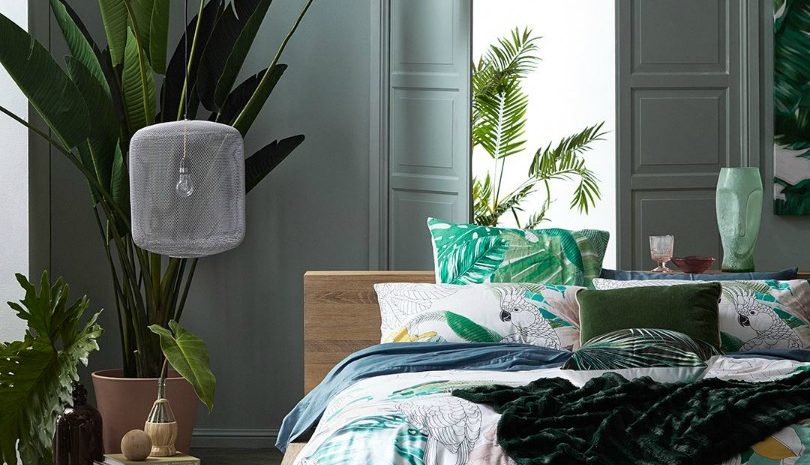Temple & Webster talks data, delivery and showrooms

Online furniture and homewares retailer Temple & Webster narrowed EBITDA losses in FY17 to $6.8 million, meeting the guidance it provided to investors and strengthening its claim that it will return to profitability in FY19 during calendar year 2018.
Reporting results to shareholders this week, Temple & Webster CEO Mark Coulter explained how a strategy of focusing on the core – simplifying strategy, focusing marketing spend and reducing operating costs – helped the company finish strong.
Coulter recently spoke with Internet Retailing about the company’s goals for FY18 and what it will really take to reach profitability. Highlights from that conversation are reproduced below, including the possibility of opening two bricks-and-mortar showrooms in the next 12-18 months, offering click-and-collect and bringing delivery in-house.
Topline growth key to profitability
“Next year is about reaching profitability. We’re not there yet, but we are very close now. We’ve done the integrations and consolidation. Those tough decisions have been made. Now, it’s about customer growth, making sure the topline is growing – that’s how we get to profitability,” Coulter said.
“How we do that is by making sure our customers know we have the biggest range in the southern hemisphere, with the best content to help you make your home look beautiful. Delivering that but also marketing it, making sure customers know that.”
Data-driven buying and marketing
“We now track what customers are looking at, what they’re buying, what they hover over on the site, and we use that data to see if there are any gaps in terms of style, category and price. Our first port of call is to work with our key strategic suppliers to make sure they’re using that data to inform their buying decisions. If not, that’s when we use our own private label to fill the gap. Given that we’re the number one online retailer in our category, we have more data than anyone else in terms of what people are looking at,” Coulter said.
“To the point around marketing, almost 100 per cent of our marketing is data-based. We do very little above-the-line marketing. Most of it is digital. We’ve done a partnership with a data company to identify which customers are our most high-value customers and target that with direct marketing and particular offers. That was quite successful.”
“How we see data from a marketing point of view is we identify customers that will respond best and try to speak with them on as micro a level as possible with an offer that’s tailored to them.”
Bricks-and-mortar showrooms
“The clearance outlet [in Melbourne] is temporary. We had the lease, so after we made the decision to integrate Milan Direct into Temple & Webster, converting it from an offline brand to be part of the website, we decided to use the space as a clearance outlet,” Coulter said.
“We do want to continue exploring offline retail and plan to convert the space into a more standard showroom. We’re also exploring using our office space [in Sydney] as a by-appointment showroom. So if an interior designer is doing a job for a client, they can come in. Those are the two offline executions we’ll be exploring in the next 12-18 months. But at heart, we are an online retailer.”
Click and collect
“When we offered click and collect through the Milan Direct showroom, we noticed it had a very high uptake. We do still see click and collect as an important part of solving the last mile. We’re working on plans to solve it,” Coulter said.
Bringing delivery in-house
“I have to say no one is doing bulky delivery well. That’s also a problem with our logistics operators, they’re not bulky specialists. I think we have to differentiate. We’re doing much more volume than anyone else and we can invest more than anyone else to really improve our delivery experience. I see that as a core differentiator down the track,” Coulter said.
“I would like to see us have our own in-home delivery experience, where a Temple & Webster driver turns up at your door. I think with e-commerce it’s very easy to focus on the pixels and getting the catalog up, the hard part is the commerce bit. It starts with the sourcing and ends with delivery, getting the product into a home, undamaged with a happy customer. That’s the hard bit. The e-commerce players [who have brought delivery in-house] are market leaders in their category.”
Customer service turns professional
“There are different ways we can help customers feel comfortable that they’re buying the right product. Shooting in situ and up-selling to say this goes with that, through to a much more high-touch model. We’re putting our entire customer care team through style school, so they can answer questions more authoritatively. We also have interior designers on staff who can do mood boards and offer the full hand-holding service,” Coulter said.
“What a retailer needs to do in the new world is work out what they can offer the customer above product and price. It all starts with that, but the reason someone shops with us is what we can do over and above that – we definitely see increasing the knowledge of our team and training them up, to be incredibly important.”
Selling on Amazon
“We’re in no rush to start a marketplace offering right now, but we’re probably looking at it with our eyes open and will take steps when we’re ready. I don’t see Amazon being in furniture for a long time. The consumer electronics, general merchandise and grocery, they’ll do that first,” Coulter said.
Comment Manually
You must be logged in to post a comment.

No comments